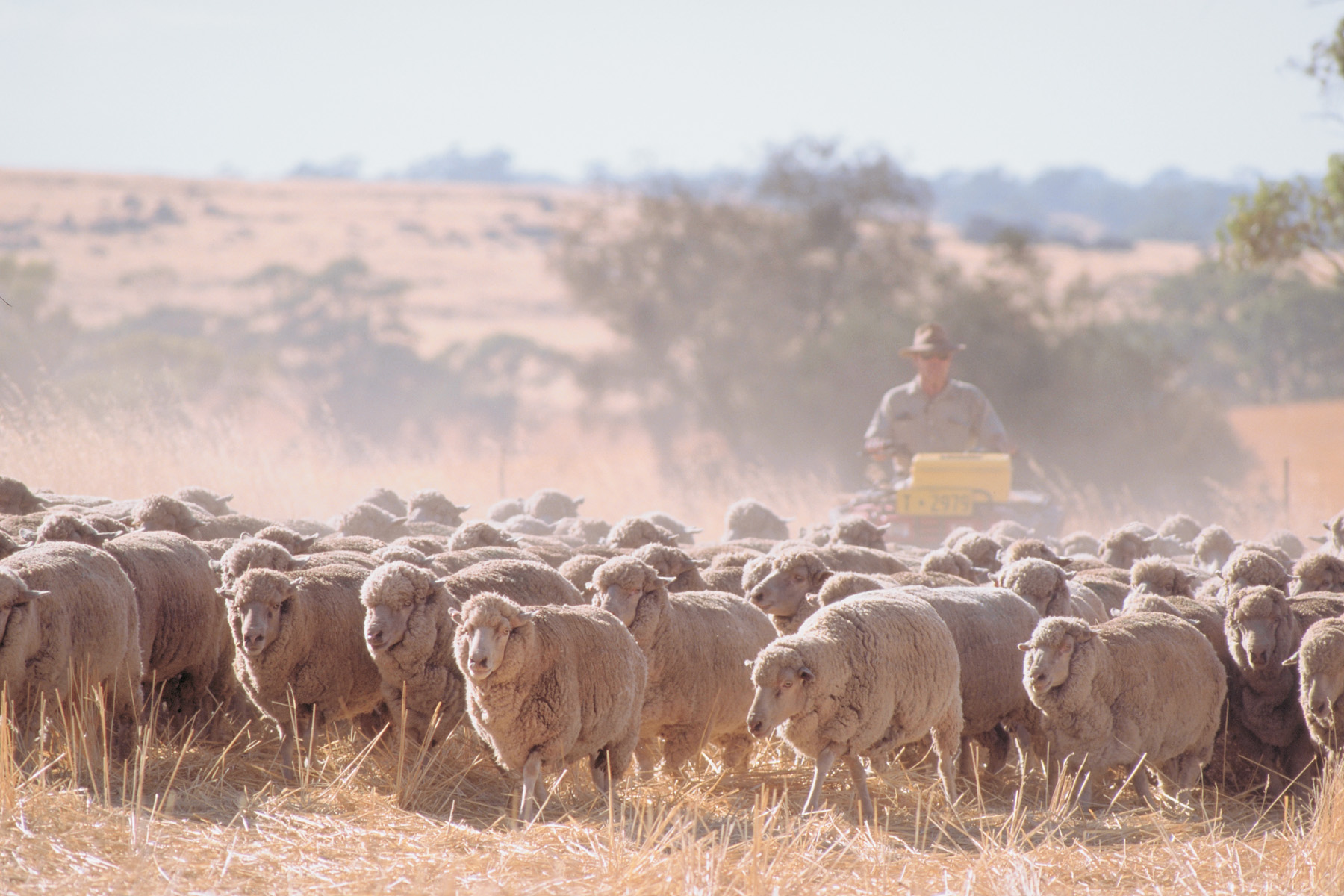What is Footrot?
Footrot is an infectious, contagious disease affecting cattle, sheep and goats. The disease in sheep and goats differs from the condition in cattle.
In sheep and goats, footrot is a contagious bacterial infection caused by the bacteria Dichelobacter nodosus (D. nodosus) which can be classified as benign or virulent. Dependent on the strain, the symptoms and health impacts on the flock will differ.
The disease is spread from foot to foot via pasture or muddy feedlot areas.
Impact
An outbreak of footrot can have damaging effects on the productivity and economic viability of a flock which include:
- Decrease in animal body weight which may require supplementary feeding
- Lower lamb weight increasing mortality and health implication at weaning
- Lower wool production and quality
- Increased costs associated with treating an outbreak
- Lower marketing opportunities due to reporting legislation
Favourable Conditions
The following 3 conditions contribute to the severity and spread of footrot:
- Agent: Depending on the strain the infection could be benign or virulent.
- Host: Merinos are more susceptible to footrot than British breed sheep.
- Environment: Warm and wet conditions aid bacterial spread and multiplication. Moist pastures, muddy feet lots or laneway will increase the likelihood of disease spread.
The bacteria can only survive away from the foot for a maximum of 7 days, even in ideal conditions. In less favourable dry conditions, the bacteria die rapidly.
Diagnosis
Footrot should be suspected in lame animals, especially if conditions are wet, warm or muddy.
Signs of footrot in sheep and goats:
- Multiple animals lame in multiple feet
- Moist, red skin between the claws
- Slight to severe underrunning (i.e. separation) of horn from hoof. Starts at the heel, then spreads to the sole, toe and eventually to the outer wall
- Usually more than one foot is affected
- Rotten cheese-type odour
- Infected feet can also become flyblown
- Loss of body condition and decreased wool production
Accurate diagnosis is essential as early outbreaks of footrot can be difficult to distinguish from other diseases.
Examine as many sheep as possible and observe flock health over several weeks to determine the virulence.
Animal health officers and vets will be able to take samples to confirm diagnosis.
Stages of Infection
Clinical signs of footroot vary depending on the virulence of the bacteria; a four-stage scoring system is used to describe the progression of an infection.
Initial signs occur in the skin between the toes, with skin becoming red and hair falling out, and is given a score 1 or 2. Score 3 sees the horn beginning to separate. A grey paste-like substance will form at the site of infection, having a distictive foul smell.
Severe infections can result in score 4, where the entire horny layer of the hoof can be separated.

Management
A correct diagnosis of footrot is important before proceeding with treatment.
- Foot bathing in zinc sulphate every 7-10 days or Radicate every 12 to 16 days
- Quarantining affected mobs so uninfected flock do not cross their path for 7 days
- Administration of antibiotics on veterinarian recommendation
Prevention
Footrot is more common during autumn and spring during warm wet conditions. The following should be followed to prevent economic losses and animal welfare impacts.
- Developing and implementing a farm biosecurity plan
- Cleaning and disinfecting boots after walking through pastures, muddy feedlots and laneways of where infected animals may have been
- Inspecting the feet of as many sheep as possible before purchase
- Purchasing sheep with an animal health statement/valid footrot vendor declaration
- Ensuring the transportation truck is clean before loading stock
- Quarantining and foot bathing new sheep before introducing them into your flock
- Inspecting rams before putting with the ewes
- Maintaining feedlot areas to prevent muddy conditions
- Maintaining fencing to prevent stay sheep from entering into the property
- Don’t move sheep on road that have been used by other sheep in the past 7 days
Read more information on how to organise Yards and Loading Facilities.
Legislation
Footrot of sheep and goats is a scheduled disease under disease control legislation. This means that outbreaks of footrot must be notified to an Inspector of livestock within 7 days.
There are three ways to notify Agriculture Victoria’s Chief Veterinary Officer of suspected notifiable diseases:
- Call the Emergency Animal Disease Watch Hotline on 1800 675 888 (24 hours a day, every day of the year). This option must be used for all diseases (other than bee diseases) that must be reported immediately.
- The Notify Now app, which allows users to send high-quality geo-located photographs of the affected animals, with the owner’s details and Property Identification Code.
- Disease notification form (WORD – 63.2 KB), which can be emailed to [email protected] or posted to:
Chief Veterinary Officer
Agriculture Victoria
475–485 Mickleham Rd
Attwood VIC 3049
Remember:
- It is illegal to sell infected sheep or goats other than for slaughter
- It is illegal to place footrot infected sheep in or adjacent, to any saleyard or in any public place (including a road)
- Infected sheep must be treated
- Inspectors of livestock have the power to test and restrict movement of infected or suspect sheep and to ensure treatment is carried out
Further Resources
Click here to download a PDF version.
For further information, please contact the VFF Stock Sense team on 1300 882 833 or by email [email protected]
